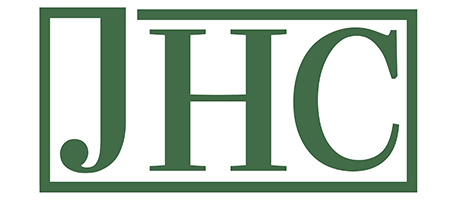Choosing the right business entity structure is crucial for the success and longevity of any enterprise. At Jennings & Hawley, we understand that each business is unique and requires a tailored approach to its organizational framework. Here, we outline the primary business entity structures to help you make an informed decision.

Implications of Business Structure
The structure of a business entity has significant implications across various aspects of business operations, legal obligations, and financial outcomes. Here are some of the most important implications:
Legal Liability
Personal Liability Protection: Different structures offer varying degrees of protection for owners’ personal assets. For example, corporations and LLCs provide limited liability, shielding personal assets from business debts and lawsuits, whereas sole proprietorships and general partnerships do not.
Taxation
Tax Treatment: The choice of entity affects how a business is taxed. Sole proprietorships, partnerships, and S corporations typically benefit from pass-through taxation, where business income is reported on owners’ personal tax returns. C corporations face double taxation, where income is taxed at both the corporate level and again as shareholder dividends.
Tax Obligations and Deductions: Different structures offer unique opportunities for tax deductions and credits, influencing overall tax liability. The ability to deduct healthcare costs, retirement contributions, and other expenses varies by entity type.
Administrative Requirements
Complexity and Cost: Corporations and LLCs often require more extensive record-keeping, reporting, and compliance compared to sole proprietorships and partnerships. These administrative responsibilities can increase both complexity and operational costs.
Control and Management
Decision-Making Authority: The chosen structure impacts how decisions are made and who has control over the business. Sole proprietorships offer complete control to the owner, while corporations involve a board of directors and shareholders, distributing decision-making power.
Operational Flexibility: Some structures offer more flexibility in management and operations. For instance, LLCs allow for customized management arrangements, whereas corporations follow more rigid protocols.
Funding and Investment
Capital Raising: The ability to raise capital is significantly influenced by the business structure. Corporations can issue stock to attract investors, providing a means to raise substantial funds. In contrast, sole proprietorships and partnerships may have limited access to outside investment.
Investor Appeal: Certain structures are more appealing to investors due to factors like limited liability, potential returns, and the formalized governance of corporations, which may provide greater security and confidence.
Continuity and Succession
Business Continuity: Corporations have perpetual existence, meaning they continue to exist beyond the involvement of their original owners. Sole proprietorships and partnerships, however, may dissolve upon an owner’s departure or death.
Succession Planning: The ease with which ownership can be transferred varies by structure. Corporations and LLCs typically facilitate smoother transitions in ownership compared to sole proprietorships.
Regulatory Environment
Compliance Requirements: Different structures are subject to different regulatory requirements, including state and federal filings, employment laws, and industry-specific regulations. Ensuring compliance can be more demanding for some entities than others.
Legal and Financial Strategy
Risk Management: Choosing the right structure can be a strategic decision to mitigate risks associated with legal liability and financial exposure. Entities like LLCs and corporations provide frameworks that help manage and distribute risk effectively.
Growth and Scalability: Some structures are better suited for growth and scalability. Corporations, for example, can easily expand through the sale of shares and attracting new investors, facilitating large-scale growth.
Types of business organization advantages and disadvantages
Sole Proprietorship
A sole proprietorship is the simplest form of business structure, owned and operated by one individual.
Advantages:
- Ease of Formation: Minimal legal requirements and low startup costs.
- Complete Control: The owner has full decision-making authority.
- Tax Benefits: Profits are taxed directly as personal income, avoiding corporate taxes.
Disadvantages:
- Unlimited Liability: The owner is personally liable for all business debts and obligations.
- Limited Capital: Funding is restricted to personal resources and loans.
Partnership
A partnership involves two or more individuals sharing ownership and operation of a business.
Types:
- General Partnership (GP): All partners share equal responsibility and liability.
- Limited Partnership (LP): Includes both general and limited partners, where limited partners have restricted liability.
- Limited Liability Partnership (LLP): Provides liability protection to all partners.
Advantages:
- Combined Resources: Partners can pool skills, knowledge, and capital.
- Pass-Through Taxation: Profits are taxed at the individual partners’ rates, avoiding double taxation.
Disadvantages:
- Joint Liability: General partners are personally liable for business debts.
- Potential for Conflict: Disagreements among partners can affect business operations.
Limited Liability Company (LLC)
An LLC combines the liability protection of a corporation with the tax benefits and flexibility of a partnership.
Advantages:
- Limited Liability: Owners (members) are not personally liable for business debts.
- Tax Flexibility: Can choose to be taxed as a sole proprietorship, partnership, or corporation.
- Operational Flexibility: Fewer formalities and administrative requirements compared to corporations.
Disadvantages:
- Varied State Laws: Regulations and fees differ significantly across states.
- Self-Employment Taxes: Members may be subject to self-employment taxes on their share of profits.
Corporation
A corporation is a separate legal entity owned by shareholders, providing the strongest protection from personal liability.
Types:
- C Corporation (C Corp): A standard corporation subject to corporate income tax.
- S Corporation (S Corp): A special type of corporation with pass-through taxation, limited to 100 shareholders.
Advantages:
- Limited Liability: Shareholders are not personally liable for business debts.
- Access to Capital: Easier to raise funds through the sale of stock.
- Perpetual Existence: The corporation continues to exist beyond the life of its owners.
Disadvantages:
- Double Taxation: C Corps face taxation at both the corporate and shareholder levels.
- Complexity and Costs: More regulatory requirements and higher administrative costs.
Every business is unique, with its own set of goals, challenges, and operational nuances. This individuality makes it crucial to choose a business entity structure that aligns with specific needs and objectives. Engaging a CPA to assess your individual situation ensures that you receive expert guidance tailored to your business’s particular circumstances. A CPA can provide invaluable insights into the implications of each structure, considering factors such as liability protection, tax benefits, and administrative requirements. At Jennings & Hawley, we emphasize the importance of personalized advice, helping you navigate the complexities of business entity selection to secure the most advantageous setup for your enterprise.
Entity Structuring FAQ
You want to choose the right entity structure, because it can significantly impact your business’s tax obligations and liability protection (all of which can affect its overall success). The structure of your business can even influence its day-to-day operations, which is why you should choose an entity structure that will give you the right balance of legal protection and financial benefits.

Here are some common questions people ask about entity structuring and how it can affect their business.
The main difference between an LLC and a corporation is in how they’re structured and taxed. An LLC will give you more flexibility in terms of management and doesn’t require as much formal paperwork. It also has the benefit of “pass-through taxation,” which means that profits and losses will flow directly to your personal tax returns.
A corporation has a more formal structure and comes with stricter requirements for keeping records. Corporations can issue stock, which makes them attractive to businesses that want to raise capital. But they may be subject to double taxation, where both the company and its shareholders are taxed on profits. Companies can also choose to form an S Corp, which will allow them to avoid that extra liability.
The process of forming a new business entity usually takes 1-3 weeks, but the exact time will depend on a number of factors. Some of them can include the following:
– State processing times.
– The type of entity.
– The complexity of your business.
After an initial consultation, you will have to file Articles of Incorporation or Organization. You will also have to get an EIN from the IRS before registering with state and local agencies. There are expedited filing options that can reduce the timeline to 1-3 business days, but it’s only available in some states. You may also need some extra time for obtaining licenses and permits (depending on your business type and location).
While you’re deciding on a structure for your business, there are several things that you should take into consideration. Liability protection is critical, because different structures will offer various levels of personal liability protection. You also have to think about taxation, because some entities (such as LLC’s) will offer pass-through taxation. But other entities (such as a C Corporation) can face double taxation.
The management structure is another important factor, because some entities (such as LLC’s) will give you more flexibility. Corporations, on the other hand, will have a more formal management system. If you need to raise more capital, forming a corporation may be more advantageous because it can issue stocks to attract investors.
The last thing you need to think about is the ongoing compliance requirements, because different structures will involve various levels of paperwork and fees. They will also have different legal obligations for maintaining the business.
Most entities (including LLCs and corporations) must file formation documents (such as Articles of Incorporation or Articles of Organization) with the appropriate state agency (usually the Secretary of State) to legally establish the business.
A registered agent is a person or company that has been designated to receive legal documents on the business’s behalf. Most states require LLCs and corporations to appoint a registered agent.
An Employer Identification Number (EIN) is a federal tax identification number that the IRS issues, and it’s used to identify a business entity for taxation purposes. You’ll need this number if you have employees and operate as a corporation or partnership. You will also need an EIN if you want to open a business bank account. A lot of businesses need an EIN to apply for business licenses and permits, so it’s an important identifier for businesses (especially with regard to taxation, banking, and legal documentation).
The name you choose for your business must be unique, and it must not be used by another entity in your state. You also need to make sure the name complies with state rules, which may require you to include specific words (such as “LLC” or “Corporation”). But it will depend on the type of entity you’re forming. Be sure to check for trademark availability to avoid any legal issues or infringements. This careful selection process will be helpful in protecting the identity of your business. It will also make sure you’re in compliance with any legal requirements.
If you’re looking for a CPA in Corpus Christi to help you understand the finer points of entity structuring, be sure to get in touch with Jennings & Hawley.
